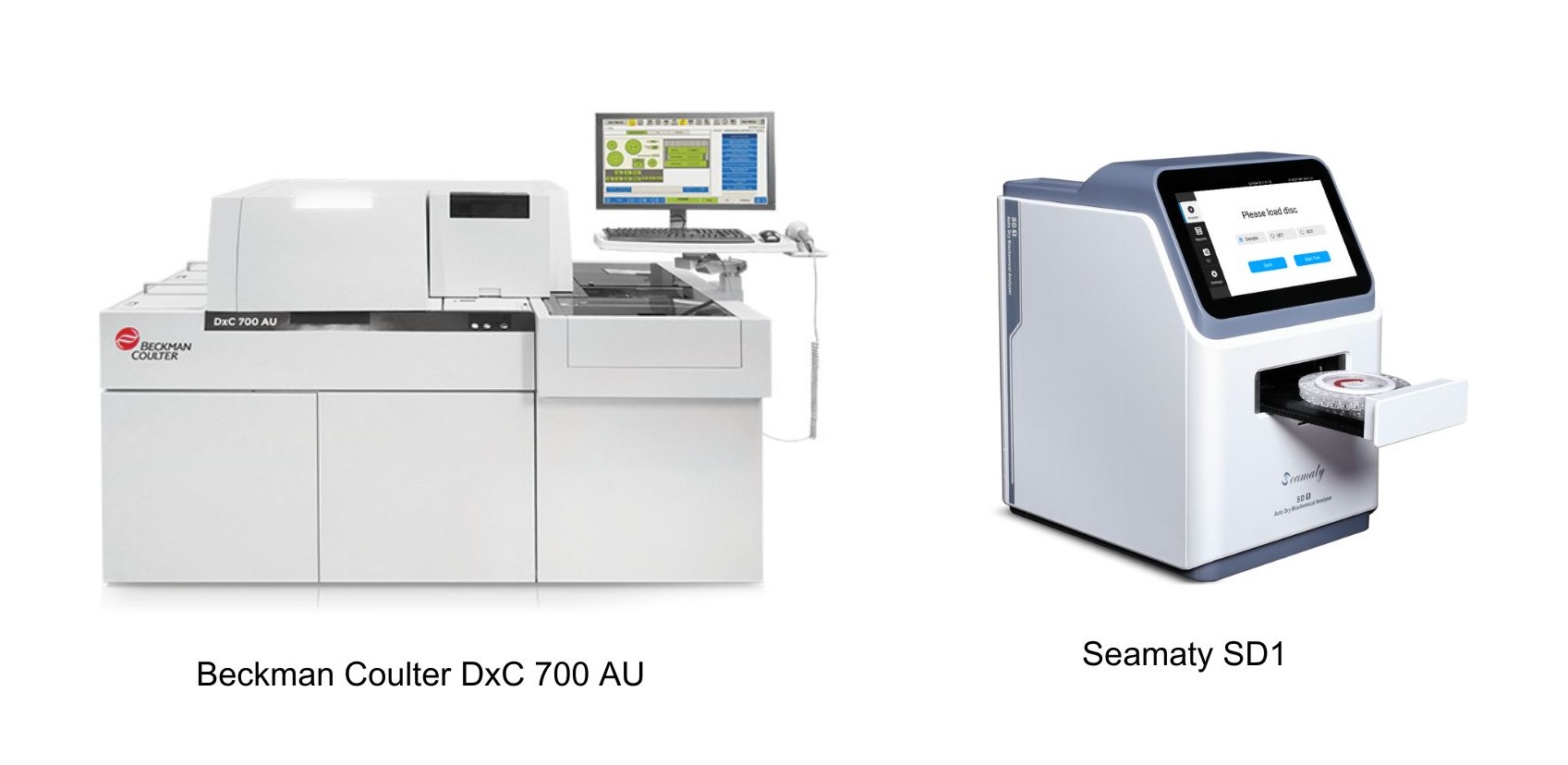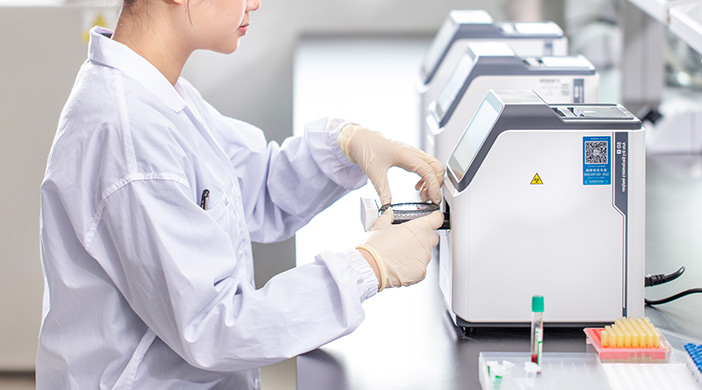release time:2023-06-30 16:53:59
Hypothyroidism is a significant health concern in dogs, affecting their metabolism, growth, and overall well-being. To effectively diagnose this condition, accurate testing methods are crucial. This comprehensive guide provides essential information on hypothyroidism testing in dogs, focusing specifically on cTT4 analysis using the advanced VG2 Vet Analyzer by Seamaty.
Hypothyroidism in dogs occurs when the immune system attacks the thyroid gland, leading to insufficient production of thyroid hormones. This condition can manifest through various symptoms, including obesity, skin problems, excessive sleepiness, lethargy, and exercise intolerance. Timely detection and proper diagnosis are vital for effective treatment.
cTT4 (canine total T4) analysis plays a pivotal role in assessing a dog's thyroid function. By measuring the levels of total T4, this test provides valuable insights into the functioning of the thyroid gland. The advanced VG2 Vet Analyzer, developed by Seamaty, is a cutting-edge diagnostic device that combines fluorescence immunoassay, blood gas, and electrolyte analysis capabilities in one portable and user-friendly device.
When a dog exhibits the above symptoms, the owner should make an appointment with a veterinarian. The typical diagnostic process includes:
- Total T4 measurement
- Complete blood count
- Biochemical profile
- Electrolyte analysis
- Urinalysis
- Thyroglobulin Autoantibody (TgAA)
The Seamaty VG2 Vet Analyzer is an innovative and versatile device designed specifically for veterinary applications. It combines the power of fluorescence immunoassay, blood gas analysis, and electrolyte analysis in a single instrument. Its compact and portable design allows for convenient use in various clinical settings.
1. Comprehensive Testing Capabilities: The VG2 Analyzer enables the analysis of multiple parameters, including blood gases, electrolytes, and immunoassays. It provides a wide range of diagnostic possibilities for diseases, immunity assessments, inflammation, and monitoring of canine and feline patients.
2. Quick and Reliable Results: With a rapid turnaround time of 4-10 minutes, the VG2 Analyzer delivers laboratory-quality results swiftly, enabling prompt decision-making for effective patient management. Its accuracy and reliability ensure confidence in the diagnostic outcomes.
3. Portable and User-Friendly:The VG2 Analyzer's compact design and intuitive interface make it easy to operate in various clinical settings. Its portability allows veterinarians to perform on-site testing, enhancing convenience and efficiency in veterinary practices.

To conduct cTT4 analysis on the VG2 Vet Analyzer, follow these steps:
Hypothyroidism in dogs can significantly impact their health and well-being. Utilizing advanced diagnostic tools like the Seamaty VG2 Vet Analyzer for cTT4 analysis enables accurate detection and monitoring of this condition. By following this comprehensive guide, veterinarians and pet owners can better understand the process of hypothyroidism testing in dogs, ensuring timely intervention and appropriate treatment for their furry companions. The VG2 Vet Analyzer, with its combined fluorescence immunoassay, blood gas, and electrolyte analysis capabilities, provides reliable and efficient diagnostic results, contributing to enhanced veterinary care.
▼Click to watch the operation video of how to test cTT4 on the Seamaty VG2▼

2024-06-27
The future of pet care is here! Explore how advancements in AI, telemedicine, and genetics are revolutionizing veterinary diagnostics, leading to earlier disease detection and personalized treatments for our furry friends.

2023-06-16
Discover the ideal chemistry analyzer for small labs: Seamaty SD1 vs. DxC 700 AU. Find out why the Seamaty SD1 excels with its smaller sample size, accuracy, speed, and ease of use. Make informed decisions for efficient and cost-effective diagnostics.

2022-02-22
Different manufacturers of various models of biochemistry analyzers use pure water to meet national requirements. The following is the impact of unqualified pure water on the biochemistry analyzer.